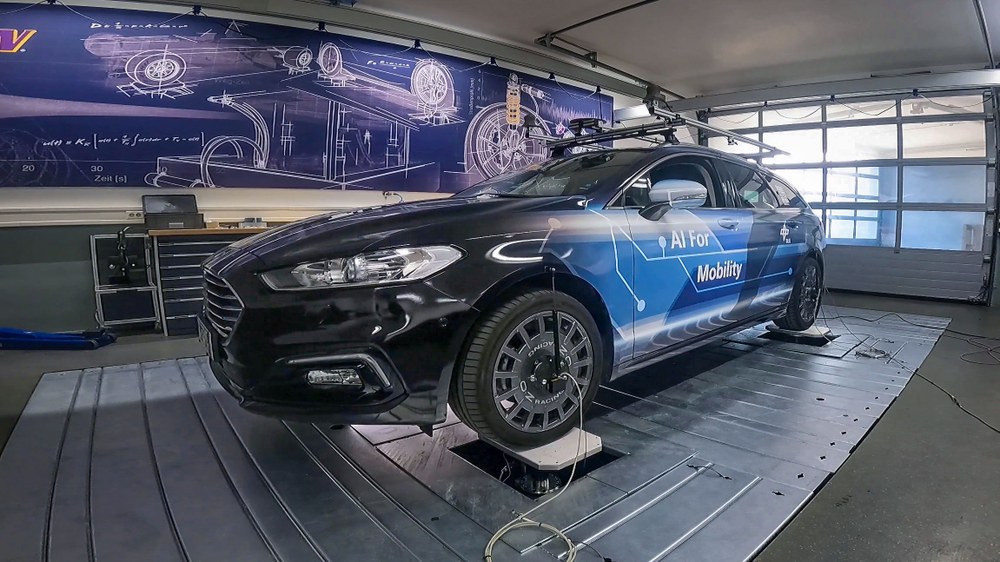AFM Experiments on a Vertical Dynamics Test Rig for AI-based Control Algorithms
This setup allows to measure and analyze the vehicle dynamics with predefined post-height profiles. Among others, harmonic and road-like excitations were used in the conducted tests. Sinusoidal excitements with increasing frequency were applied to estimate the transfer function of characteristic vehicle states. The acceleration of the chassis as well as the wheel loads are of major interest, as they can be used to quantify the riding comfort and the riding safety respectively. To further support the modelling process, many different quantities were recorded on the test rig. Not only accelerations of wheels, chassis and the engine, but also the deflections of the components are of interest and are measured with potentiometers. Adding the actuator currents of the semi-active dampers, the positions, velocities and accelerations of the four posts, the dynamic wheel loads and additional auxiliary quantities, more than 50 signals had to be handled. The high number of measurement channels demanded to log on two different devices. For the posterior synchronization of the records, a defined signal was logged on both devices and then used to calculate the delay and compensate for the different time-bases of the measurements.
In almost 100 separate experiments with sine-sweeps with different amplitudes, roll- and pitch excitements and realistic road profiles, the limits of the suspension were systematically tested. For the ad-hoc analysis, two applications were developed, which allow to visualize the measurement data in time-domain and estimated transfer-functions for arbitrary input-output combinations.

